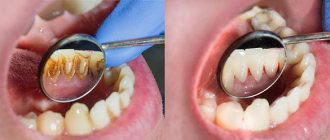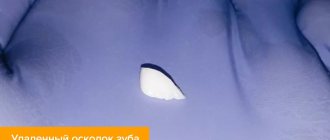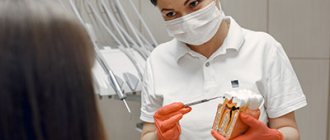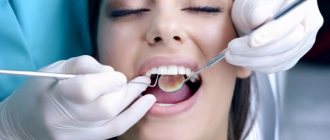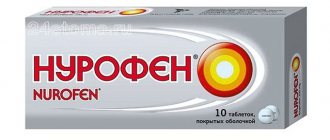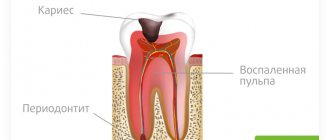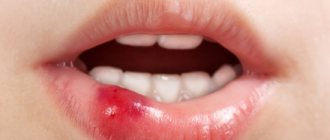Complications after wisdom tooth removal can occur almost immediately after the operation. Some of them are natural, since removal is a complex surgical procedure, “eights” are located in hard-to-reach places, and they have large roots. But sometimes complications can make themselves felt within six months, and they provoke diseases of the gums, adjacent teeth, bones and even joints. To prevent such problems, you need to know the first signs of pathology and urgently contact an experienced dentist.
Is it worth keeping wisdom teeth?
A number of experts believe that it is advisable to remove figure eights in adolescence, when their root system has not yet fully formed, and the jaw bones have not acquired the density characteristic of adult patients. Others are of the opinion that the teeth that erupt later than others are best left in the dentition if:
- the tooth is positioned correctly in the jaw bone, grows vertically and is fully erupted without forming a pocket over it;
- the tooth is available for dental manipulation in case of caries development;
- the root system and the condition of the tooth crown make it possible to use the “eight” as a support for a prosthesis;
- There is enough space on the jaw and the appearance of another “combat unit” will not provoke crowding of the teeth.
The main problem with wisdom teeth is that they are not involved in the act of chewing, so their surfaces are much less easily cleaned of bacterial plaque and tartar. Inspection of a crown located in the depths of the oral cavity by the person himself is difficult, especially in cases where part of it is covered by the gum. This causes the formation of complications of an advanced carious process.
Particular attention should be paid to impacted teeth that are located in the soft tissue of the gums or jaw bone. In fact, this is a “time bomb” that can explode at any moment. The “figure eight” located in the tissues can become inflamed, simulating the symptoms of acute otitis media and pharyngitis. The active inflammatory process is accompanied by a significant rise in temperature, pronounced intoxication. It can be difficult to make a diagnosis in such conditions, since the problematic tooth may not show itself in any way, and doctors of several specialties will have to be involved in the diagnosis.
Methods for restoring a lost front tooth
If a front tooth has fallen out or been removed, then aesthetics is a very important aspect. The front teeth are a smile, this is a person’s appearance. The absence of a tooth in such an aesthetically important area significantly reduces a person’s quality of life. There may be several treatment options here.
Method 1: implant installation
It’s worth saying right away that installing an implant in the area of a missing tooth will be the most reasonable and least traumatic solution to the problem. Installing an implant involves implanting a titanium tooth root into the bone and then installing a crown on it. This design has a long service life, does not affect neighboring teeth and ensures complete restoration of the function and aesthetic properties of the teeth.
Method 2: installation of a bridge
Other options for restoring a tooth lost due to various reasons may be orthopedic methods, which are bridges and removable dentures. The most important and rather significant disadvantage of bridges in the oral cavity is its traumatic nature in relation to neighboring teeth. To make a bridge structure, the doctor needs to determine the supports on which the prosthesis will be fixed. There can be 2 such supports (2 teeth on each side of the missing one) or even more. In accordance with this, each supporting tooth must be processed and prepared for a crown, which will be part of the prosthesis. In some cases, the choice of several supports (more than 2) depends on the condition of the teeth, the area of the fallen or extracted tooth and the number of missing teeth. In addition, the disadvantage of bridges is the possible deterioration of the condition of the supporting teeth after the expiration of the service life of the prosthesis. If it is necessary to replace it, the supporting teeth, as a rule, do not satisfy all the necessary requirements, as a result of which it is necessary to take more teeth as supporting teeth or change the treatment method.
Method 3: installation of a removable denture
Another treatment option is a removable denture, which replaces the missing tooth. Such a prosthesis also needs support, not with the help of crowns, but with the help of special clasps (hooks that cling to adjacent teeth). In addition to the low aesthetic properties of this prosthesis, wearing it over time causes atrophy of bone tissue in the area of the removed or fallen tooth, which can create certain difficulties if it is necessary to change the design.
Method 4: installation of pin structures and inlays
Another method of orthopedic dentistry is pin structures and inlays. These are special metal structures, on one side they have a pin that is fixed in the root of the tooth, on the other side there is a stump of the prepared tooth, and the crown is fixed on the part. With their help, you can restore a tooth if only the root remains. After treating the root and filling it, a pin-stump inlay is made, which serves as a tooth stump, onto which the crown is subsequently fixed, and the inlay pin strengthens the root and makes the final structure strong. The inlay is not visible under the crown, which gives high aesthetic properties to this treatment method. The inlays have found wide application and are successfully used by many doctors. In this case, the key role is played by the condition of the broken tooth, namely the remaining root. If the root allows the use of an inlay, then such a tooth can last for quite a long time. With such designs, the level of bone tissue is preserved, which allows for implantation after the expiration of the service life of the inlay and crown.
The most optimal way
Based on all of the above methods, in the absence of a tooth, it is better to place dental implants, since this method is the least traumatic, meets functional and aesthetic requirements, has a long service life and maintains the volume of bone tissue at the required level. Implantation is also the most optimal treatment method for complete absence of teeth. In such situations, there are several methods; in any case, implants are the most optimal solution. Several implants can support the load of the entire jaw.
Prosthetics on implants are also variable. Each patient will be able to choose the appropriate option for himself. The hygiene of structures fixed on implants is also very convenient for both the patient and the doctor. Regular visits to the dentist for preventive examinations allow you not only to maintain the proper level of hygiene, but also to monitor the dynamics of the condition of the bone tissue and the condition of the implants in the bone.
Depending on the age of the patient, various types of dental restoration are recommended, we are talking about implantation and removable prosthetics, which can be used in the case of an extremely small volume of jaw bone tissue and the impossibility of installing implants. In such cases, removable dentures are the treatment of choice for the patient. If it is possible to install at least 4 implants, then you should give preference to the surgical method!
Is it painful to have a wisdom tooth removed?
Everything is very individual and depends on the volume of dental procedures that need to be performed in order to extract the tooth. According to statistics, the upper “eights” are easier to remove than the lower ones, and a fully erupted crown is easier to grasp with forceps than an impacted one.
The removal process is carried out under local anesthesia, so the patient does not feel any particular physical discomfort. Some time after the local anesthetic wears off, pain of varying severity may be present. The more tissue was damaged during the removal of a tooth or its parts, the higher the likelihood that it will not be possible to do without taking analgesics.
The most unfavorable situation is when a tooth grows from the horn of the upper jaw and is located horizontally in the bone, resting its chewing surface on the side of its neighbor. Here you cannot do without an operation, which can take an hour or more.
Causes of dental injuries
Most often, dental damage occurs at one moment, for example, during an accident, a fall, a strong blow to the jaw, or performing a sports exercise. Sometimes a tooth shifts gradually if a future dental patient periodically chews hard objects, nails, or tears threads with his teeth. As a result of such manipulations, tooth enamel is gradually worn away and chips appear. Subsequently, the tooth may crumble during ordinary activities, such as brushing or chewing food.
In good dentistry, treatment procedures are always successful, in compliance with all rules. However, if you decide to take a risk and save money, the tooth may be destroyed if the operation is unsuccessful. For example, dislocation can occur due to inaccurate removal of nearby teeth. Injuries are also common when installing orthodontic appliances.
How is the removal done?
In simple cases, “eights” are pulled out according to the standard scheme, which includes:
- Inspection and examination. The doctor visually and using instruments determines the position of the tooth in the jaw, its condition, indications and contraindications for removal. An x-ray is required to exclude “surprises” in the form of roots bent with a fishing hook, which are guaranteed to break and remain in the bone when removed, or a jaw cyst.
- Anesthesia. Typically, lidocaine, novocaine and other local anesthetics are used, which are injected into the gum tissue on both sides of the alveolar process of the jaw. The drug begins to act a few minutes after the injection. Just in case, the doctor checks the level of numbness by touching the mucous membrane and observing the person’s reaction. Complex operations can be performed in a hospital setting under general anesthesia.
- Delete. If the tooth crown is located on the surface, then it is grabbed with forceps, loosened and removed. If it is completely or partially covered by the mucous membrane, then first an incision is made. After pulling out a tooth, the doctor places sutures on the mucous membrane in order to prevent inflammation and stop bleeding.
How do you get a fragment?
As soon as the patient visits the dentist, the doctor will carefully examine the hole and send it for a diagnostic study (x-ray). If the cause of discomfort is an abandoned fragment, the further algorithm of actions is as follows:
- Introduction of an anesthetic.
- If the fragment is visible visually, the doctor will simply remove it using special forceps.
- If the fragment is stuck deep, it will be necessary to excise the mucous membrane, and only then remove the rest of the tooth.
- Next, a thorough antiseptic treatment is performed. If the incision is deep, sutures may be performed.
Consequences of wisdom tooth removal
According to statistics, the longer you delay removal, the higher the risk of complications. Adverse consequences of the procedure include:
- nerve damage, which is accompanied by numbness of the oral mucosa;
- damage to the enamel of adjacent teeth;
- fracture of the jaw when excessive pressure is applied to it.
These complications occur equally often during tooth extraction of any location. During the recovery period, it is necessary to pay attention to the condition of the hole left after tooth root removal. Normally, a blood clot forms in it, which creates optimal conditions for healing.
If you wash out this clot while rinsing, a complication known as a dry socket is formed. The walls of the cavity become inflamed, and a constant dull pain appears. A dry socket does not heal on its own. It is necessary to carry out anti-inflammatory treatment and take anesthetics. For this purpose, it is advisable to consult a doctor as soon as possible and get a prescription.
Symptoms
After tooth extraction, the patient should be as attentive as possible to his well-being; if he feels unwell, he should see his doctor as soon as possible. The most common symptoms include: severe redness of the gum tissue, high body temperature even several days after the manipulation, the appearance of pain, purulent discharge, severe swelling, etc.
Of course, these symptoms are most often the norm, but only if their intensity gradually decreases. If the pain and swelling intensify, then this indicates the beginning of the inflammatory process.
It is important to understand that you should not examine the wound at the site of tooth extraction yourself; this can provoke a new infection and even displacement of the fragment into deeper layers of tissue. Only a competent specialist will be able to assess the condition of the patient’s oral cavity and prescribe the necessary studies and tests.
Oral care after wisdom tooth removal
Slight pain, swelling in the area of the angle of the lower jaw and cheek, difficulty opening the mouth is normal if the symptoms appear on the first day after tooth extraction and their intensity decreases day by day. Following the doctor’s recommendations can reduce the likelihood of complications and facilitate the healing process:
- do not eat during the first 3 hours after tooth extraction;
- Avoid eating hot foods and drinks;
- do not chew on the injured side;
- take baths instead of actively rinsing the mouth;
- do not heat the area of swelling, avoid any thermal effects on the facial area.
The dentist may prescribe antibiotics for preventive purposes. They must be taken in the indicated dosage as a full course.
Rehabilitation period
If a secondary surgical intervention occurs, the duration of the postoperative period increases significantly. When you get home, be sure to apply ice to your cheek. This will help relieve swelling and finally stop the bleeding. You should try not to consume any food or water for 4 hours. Rinsing the mouth can only be done after consulting a doctor.
Remember not to drink alcohol, take a hot bath or engage in strenuous exercise during the week. Neglecting these tips can lead to heavy bleeding, which cannot always be stopped at home.
Useful tips
Before removing an incorrectly positioned wisdom tooth, we offer a number of tips that will help you prepare and go through the operation more comfortably:
- Try to make an appointment for tooth extraction in the morning. During the night, the hormone cortisol accumulates in the body, which helps to survive stressful situations. In addition, one should take into account the fact that the inevitable bleeding from the wound at the site of the former tooth will stop by the evening, and the person will be able to sleep peacefully.
- Eat well before surgery. As a result, saliva will be released in smaller volumes, and then you will need to leave your jaws alone and not eat for some time.
- If possible, immediately use a cold object and periodically apply it to your cheek on the way home to prevent swelling from forming. A pack of dry ice from a motorist's first aid kit will do.
- At home, rinse your mouth with clean water or medications recommended by your doctor.
- Take medications in the correct dosage, do not get carried away with self-medication and self-prescription of drugs.
Recommendations for a better rehabilitation period after removal of an impacted wisdom tooth:
- You will need to allow a blood clot to form at the site of the extracted tooth. His presence is mandatory. The clot protects the socket from the penetration of bacteria and prevents complete deformation of the gums. Dry socket is dangerous and provokes inflammation.
- Do not touch the blood clot with your tongue, toothbrush bristles, or cutlery. It is not even recommended to use mouth rinse for 2-3 days after surgery. It is better to take the medicine into your mouth, hold it for a while and spit, avoiding the chance of dislodging the clot.
- To stop bleeding, it is permissible to use sterile cotton wool or gauze swabs. It is allowed to moisten with Chlorhexidine, Miramistin. It is prohibited to use hydrogen peroxide!
- For several days you will have to eat soft food and maintain an acceptable temperature of food and drinks.
- You are supposed to temporarily give up physical activity and training. Baths and saunas, swimming pools, solariums are prohibited.
- You cannot heat the surgical area, as this will cause a dangerous inflammatory process. You can apply ice, but under no circumstances keep it on your cheek all the time. Optimal rhythm: 5 minutes cooling, 5 minutes break. If you don’t have ice at home, bags of frozen vegetables and meat from the freezer will do.
- Maintaining oral hygiene is not prohibited. The main thing is to leave the operated area alone in the first days and not try to thoroughly clean the teeth located near the wound. Disinfection can be carried out with solutions of Chlorhexidine, Furacilin, holding it in the mouth and spitting it out, without rinsing.
Medicine knows of cases when wisdom teeth are prescribed to be preserved. But if it grows, pushing neighbors, lies horizontally or rests on the roots of nearby teeth, there is no need to think twice. Such an eight is considered problematic and is deleted without regret.

